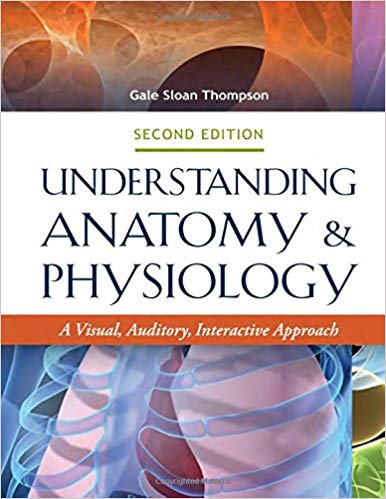Description
Understanding Anatomy and Physiology A Visual Auditory Interactive Approach 2nd Edition By Thompson – Test Bank
Chapter 5: Integumentary System
MATCHING
Match each item to the statement listed below.
|
a. |
epidermis |
f. |
stratum corneum |
|
b. |
cutaneous membrane |
g. |
melanin |
|
c. |
dermis |
h. |
papillae |
|
d. |
stratum basale |
i. |
ceruminous gland |
|
e. |
keratin |
j. |
eccrine gland |
1.Outer layer of epidermis
2.Inner layer of the skin
3.Protects nucleus from sun damage
4.Secretes sweat
5.Outermost layer of the skin
6.Inner layer of epidermis
7.A fibrous protein
8.Helps bind layers of skin together
1.ANS:FPTS:1DIF:EREF:72
KEY:REMEMBERING
2.ANS:CPTS:1DIF:EREF:71
KEY:REMEMBERING
3.ANS:GPTS:1DIF:EREF:73
KEY:REMEMBERING
4.ANS:JPTS:1DIF:EREF:77
KEY:REMEMBERING
5.ANS:APTS:1DIF:EREF:71
KEY:REMEMBERING
6.ANS:DPTS:1DIF:EREF:72
KEY:REMEMBERING
7.ANS:EPTS:1DIF:EREF:72
KEY:REMEMBERING
8.ANS:HPTS:1DIF:EREF:71
KEY:REMEMBERING
Match each item to its definition below.
|
a. |
cyanosis |
e. |
erythema |
|
b. |
jaundice |
f. |
pallor |
|
c. |
bronzing |
g. |
hematoma |
|
d. |
albinism |
||
9.Yellow discoloration of skin
10.Pale skin
11.Bluish, black, or yellowish mark on the skin
12.Blue tint to the skin
13.Abnormal redness of the skin
14.Extremely pale skin, white hair, and pink eyes
9.ANS:BPTS:1DIF:EREF:73
KEY:REMEMBERING
10.ANS:FPTS:1DIF:EREF:73
KEY:REMEMBERING
11.ANS:GPTS:1DIF:EREF:73
KEY:REMEMBERING
12.ANS:APTS:1DIF:EREF:73
KEY:REMEMBERING
13.ANS:EPTS:1DIF:EREF:73
KEY:REMEMBERING
14.ANS:DPTS:1DIF:EREF:73
KEY:REMEMBERING
Match each item to the statement or sentence listed below. Items may be used more than once.
|
a. |
basal cell |
|
b. |
squamous cell |
|
c. |
melanoma |
15.Cancer arising from epithelial cells
16.Cancer with highest risk for death
17.Cancer that rarely spreads
18.Cancer with a pearly-looking outer ring
19.Cancer that can start out as a mole
20.Cancer that looks red and scaly
15.ANS:BPTS:1DIF:MREF:79
KEY:UNDERSTANDING
16.ANS:CPTS:1DIF:MREF:79
KEY:UNDERSTANDING
17.ANS:APTS:1DIF:MREF:79
KEY:UNDERSTANDING
18.ANS:APTS:1DIF:MREF:79
KEY:UNDERSTANDING
19.ANS:CPTS:1DIF:MREF:79
KEY:UNDERSTANDING
20.ANS:BPTS:1DIF:MREF:79
KEY:UNDERSTANDING
MULTIPLE CHOICE
21.New skin cells are produced in the
|
a. |
stratum basale. |
|
b. |
cutaneous membrane. |
|
c. |
stratum corneum. |
|
d. |
dermis. |
ANS: A
New skin cells are produced in the stratum basale, which is the innermost layer of the epidermis. The cutaneous membrane is another name for skin, which would include all layers. The stratum corneum is the outer layer of the epidermis and is composed of dead cells. The dermis lies underneath the epidermis.
PTS: 1 DIF: E REF: 72 KEY: REMEMBERING
22.Which skin layer contains nerve endings, hair follicles, sebaceous glands, and sweat glands?
|
a. |
Dermis |
|
b. |
Epidermis |
|
c. |
Hypodermis |
|
d. |
Endodermis |
ANS: A
The dermis, or inner layer, contains blood vessels, nerve endings, hair follicles, sebaceous glands, and sweat glands. The epidermis does not contain these structures. The hypodermis contains adipose and connective tissue. The endodermis is a structure found in plants.
PTS: 1 DIF: E REF: 71 KEY: REMEMBERING
23.Which skin layer receives oxygen and nutrients by diffusion from the skin layer beneath it?
|
a. |
Dermis |
|
b. |
Epidermis |
|
c. |
Hypodermis |
|
d. |
Cutaneous membrane |
ANS: B
The epidermis—the skin’s outermost layer—receives oxygen and nutrients from the dermis, the skin layer directly beneath. The hypodermis exists beneath the dermis. The cutaneous membrane is the skin itself, which consists of both the epidermis and the dermis. It has an abundant blood supply in the dermal layer.
PTS: 1 DIF: E REF: 71 KEY: REMEMBERING
24.The hypodermis is
|
a. |
connective tissue that binds skin to underlying tissue. |
|
b. |
epithelial tissue that protects the dermis from abrasion. |
|
c. |
muscle tissue that supports the dermis. |
|
d. |
nervous tissue that senses pain, temperature, and other sensations. |
ANS: A
The hypodermis consists of areolar and adipose tissue, making it a connective tissue. It binds skin to underlying tissue. It is not epithelial, muscle, or nervous tissue, and it does not protect or support the dermis or sense pain, temperature, and other sensations.
PTS: 1 DIF: M REF: 71 KEY: UNDERSTANDING
25.What are the primary components of the dermis?
|
a. |
Collagen along with reticular and elastic fibers |
|
b. |
Dermal and epidermal cells |
|
c. |
Stem cells, melanocytes, hair follicles, and papillae |
|
d. |
Keratinocytes, melanocytes, hair follicles, and papillae |
ANS: A
The dermis is composed primarily of collagen as well as reticular and elastic fibers. Although the dermis also contains the other cells and structures listed, it is made up of primarily of these fibers.
PTS: 1 DIF: M REF: 71 KEY: UNDERSTANDING

Reviews
There are no reviews yet.